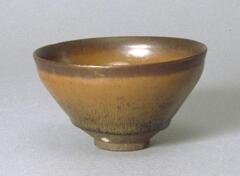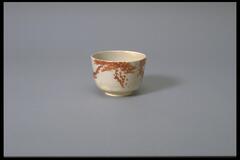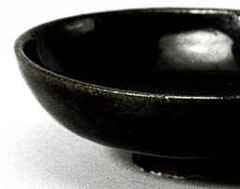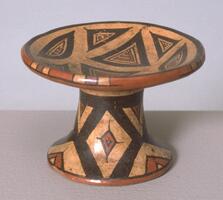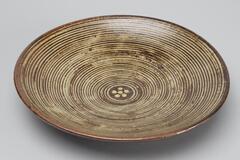72 Items in this Learning Collection
Collection Object
Collection Object
Collection Object
Collection Object
Collection Object
Collection Object
Collection Object
Collection Object
Collection Object
Collection Object
Collection Object
Collection Object
Collection Object
Collection Object
Collection Object
Collection Object
Collection Object
Collection Object
Collection Object
Collection Object
Collection Object
Collection Object
Collection Object
Collection Object
Collection Object
Collection Object
Collection Object
Collection Object
Collection Object
Collection Object
Collection Object
Collection Object
Collection Object
Collection Object
Collection Object
Collection Object
Collection Object
Collection Object
Collection Object
Collection Object
Resource with 15 media
Collection Object
Copyright
All Rights Reserved
()
Tea Bowl with Hakame Design
Accession Number
2004/1.271
Title
Tea Bowl with Hakame Design
Artist(s)
Korean
Artist Nationality
Korean (culture or style)
Object Creation Date
15th century
Medium & Support
stoneware with white brushed slip under colorless glaze
Dimensions
2 15/16 x 7 x 7 in. (7.4 x 17.7 x 17.7 cm)
Credit Line
Gift of Bruce and Inta Hasenkamp and Museum purchase made possible by Elder and Mrs. Sang-Yong Nam
Label copy
Swift, confident sweeps of a wide brush lightly dipped in white slip decorate the interior of this bowl. The rough, flat brush used to apply slip is known as a gwiyal. Buncheong potters brought this technique to Japan at the end of the sixteenth century, where it became known as hakame (“brush-mark”) and became very popular in tea ceremony wares.
---
The rustic forms and bold, unpretentious designs of Buncheong ware were greatly appreciated in Japan after the renowned tea master Sen no Rikyu introduced wabicha, or the rustic style of tea. In Korea, vessels of this type probably served as everyday food bowls, but in Japan they were elevated to the status of precious implements used only in chanoyu, the formal tea ceremony. The tea bowl’s soft clay body would be warm to the touch, and the curve of the bowl’s hip would fit comfortably in the hand. The broad foot imparted visual stability and prevented the bowl from tipping over when set down on the uneven surface of a tatami mat.
Buncheong bowls decorated solely with brushed hakame patterns are especially beloved by Japanese practitioners of wabicha. Here, the broken, calligraphic sweeps of white clay against the dark stoneware body of one bowl likely resulted from the use of a brush of coarse rice straw. The ornamentation of this bowl fits the wabicha aesthetic for surprising and unpretentious objects.
The bowl with a stamped rope–curtain design was certainly once a treasured vessel for tea. Its Japanese owner had the cracks in the bowl mended with silver and then sealed with lacquer to preserve the bowl’s functionality. The distorted shape combined with the causally executed decoration exudes a primitive power that must have resonated with wabicha aficionados. The bowl has a worn Sino–Korean inscription stating that it was made for “court-official use.” It is tempting to regard this bowl as a reject of the Joseon court that was given a new life as a treasured tea object in Japan.
(Label for UMMA Korean Gallery Opening Rotation, March 2009)
Subject matter
Tea bowl with hakame design.
Physical Description
Stoneware tea bowl with slightly flaring lip, white slip hakame design and colorless glaze.
The inner and outer surfaces of this buncheong bowl have been brushed with white slip. Its inner base retains traces of seven spurs, while the uneven application of glaze has exposed the unglazed body. The glaze itself was fairly well fused. The bowl is intact without damage.
[Korean Collection, University of Michigan Museum of Art (2014) p.156]
Primary Object Classification
Ceramic
Primary Object Type
bowl
Collection Area
Asian
Rights
If you are interested in using an image for a publication, please visit http://umma.umich.edu/request-image for more information and to fill out the online Image Rights and Reproductions Request Form. Keywords
Punch'ong
bowls (vessels)
ceramics (object genre)
stoneware (pottery)
2004/1.271
Title
Tea Bowl with Hakame Design
Artist(s)
Korean
Artist Nationality
Korean (culture or style)
Object Creation Date
15th century
Medium & Support
stoneware with white brushed slip under colorless glaze
Dimensions
2 15/16 x 7 x 7 in. (7.4 x 17.7 x 17.7 cm)
Credit Line
Gift of Bruce and Inta Hasenkamp and Museum purchase made possible by Elder and Mrs. Sang-Yong Nam
Label copy
Swift, confident sweeps of a wide brush lightly dipped in white slip decorate the interior of this bowl. The rough, flat brush used to apply slip is known as a gwiyal. Buncheong potters brought this technique to Japan at the end of the sixteenth century, where it became known as hakame (“brush-mark”) and became very popular in tea ceremony wares.
---
The rustic forms and bold, unpretentious designs of Buncheong ware were greatly appreciated in Japan after the renowned tea master Sen no Rikyu introduced wabicha, or the rustic style of tea. In Korea, vessels of this type probably served as everyday food bowls, but in Japan they were elevated to the status of precious implements used only in chanoyu, the formal tea ceremony. The tea bowl’s soft clay body would be warm to the touch, and the curve of the bowl’s hip would fit comfortably in the hand. The broad foot imparted visual stability and prevented the bowl from tipping over when set down on the uneven surface of a tatami mat.
Buncheong bowls decorated solely with brushed hakame patterns are especially beloved by Japanese practitioners of wabicha. Here, the broken, calligraphic sweeps of white clay against the dark stoneware body of one bowl likely resulted from the use of a brush of coarse rice straw. The ornamentation of this bowl fits the wabicha aesthetic for surprising and unpretentious objects.
The bowl with a stamped rope–curtain design was certainly once a treasured vessel for tea. Its Japanese owner had the cracks in the bowl mended with silver and then sealed with lacquer to preserve the bowl’s functionality. The distorted shape combined with the causally executed decoration exudes a primitive power that must have resonated with wabicha aficionados. The bowl has a worn Sino–Korean inscription stating that it was made for “court-official use.” It is tempting to regard this bowl as a reject of the Joseon court that was given a new life as a treasured tea object in Japan.
(Label for UMMA Korean Gallery Opening Rotation, March 2009)
Subject matter
Tea bowl with hakame design.
Physical Description
Stoneware tea bowl with slightly flaring lip, white slip hakame design and colorless glaze.
The inner and outer surfaces of this buncheong bowl have been brushed with white slip. Its inner base retains traces of seven spurs, while the uneven application of glaze has exposed the unglazed body. The glaze itself was fairly well fused. The bowl is intact without damage.
[Korean Collection, University of Michigan Museum of Art (2014) p.156]
Primary Object Classification
Ceramic
Primary Object Type
bowl
Collection Area
Asian
Rights
If you are interested in using an image for a publication, please visit http://umma.umich.edu/request-image for more information and to fill out the online Image Rights and Reproductions Request Form. Keywords
Punch'ong
bowls (vessels)
ceramics (object genre)
stoneware (pottery)
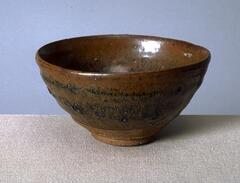
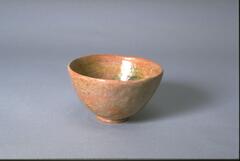
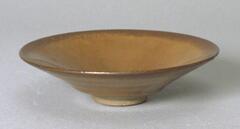
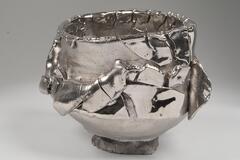
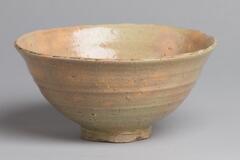
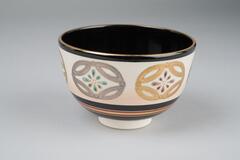
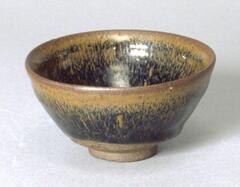
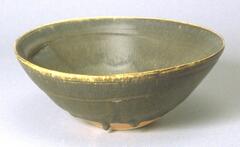

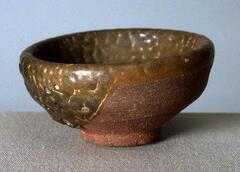
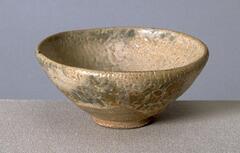
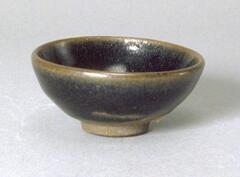
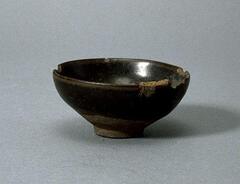
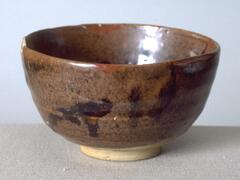
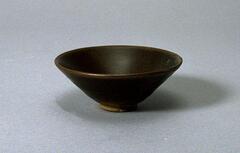
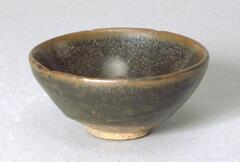

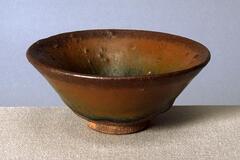
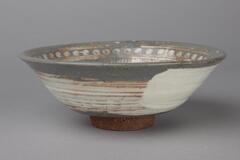
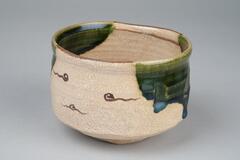
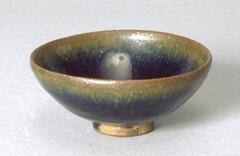


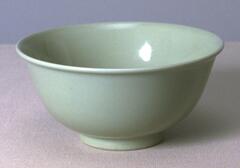

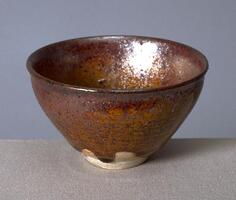
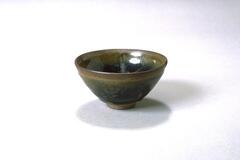

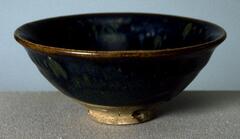
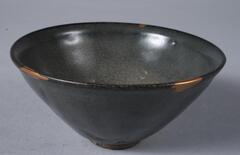
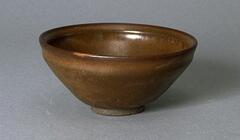
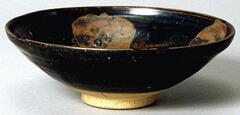
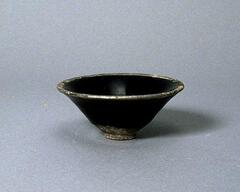
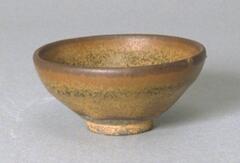
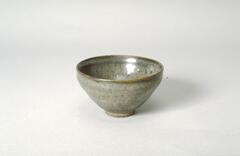

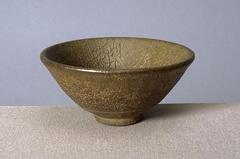
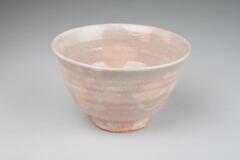
![Stoneware bowl with stamped rope-curtain design covered by a white slip and colorless glaze. A stylized inlaid chrysanthemum blossom decorates the center of the bowl, surrounded by a band of petals.<br />
<br />
This buncheong bowl with stamped design was maily supplied to government offices in the 15th century. It is decorated with a lotus flower on the inner base surrounded by lotus petals, butterflies and rows of dots on the inner wall. The outer wall, too, is filled with rows of dots. It was poorly sintered and the glaze applied to the lower part of the body is not melted in parts. The foot is not glazed and exposes the clay body.<br />
[Korean Collection, University of Michigan Museum of Art (2014) p.147] Stoneware bowl with stamped rope-curtain design covered by a white slip and colorless glaze. A stylized inlaid chrysanthemum blossom decorates the center of the bowl, surrounded by a band of petals.<br />
<br />
This buncheong bowl with stamped design was maily supplied to government offices in the 15th century. It is decorated with a lotus flower on the inner base surrounded by lotus petals, butterflies and rows of dots on the inner wall. The outer wall, too, is filled with rows of dots. It was poorly sintered and the glaze applied to the lower part of the body is not melted in parts. The foot is not glazed and exposes the clay body.<br />
[Korean Collection, University of Michigan Museum of Art (2014) p.147]](/media/W1siZiIsIjIwMjIvMDkvMjQvOWRtNDIyZTcyX2RlZmF1bHQuanBnIl0sWyJwIiwidGh1bWIiLCIyNDB4MjAwIl1d?sha=0b90e10dcc5f13d1)

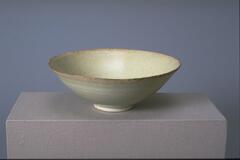
![<p>This is an undecorated bowl with diagonally flaring out sides. On the outer base and rim of the foot remain traces of refractory spur marks. The bowl was oxidized in the kiln, producing a green-brown hue, while the interior contains large bubbles. The color of its glaze is similar to that of other vessels excavated from sedimentary layers of refuse pile at celadon kilns in Goyang-si, Gyeonggi-do.<br />
[<em>Korean Collection, University of Michigan Museum of Art </em>(2014) p.101]</p>
<br />
It has an outwardly flared rim and steep side. A yellow brownish glaze is applied. The clay contains some impurities and the foot is relatively high. There is four spur-marks on the interior. <p>This is an undecorated bowl with diagonally flaring out sides. On the outer base and rim of the foot remain traces of refractory spur marks. The bowl was oxidized in the kiln, producing a green-brown hue, while the interior contains large bubbles. The color of its glaze is similar to that of other vessels excavated from sedimentary layers of refuse pile at celadon kilns in Goyang-si, Gyeonggi-do.<br />
[<em>Korean Collection, University of Michigan Museum of Art </em>(2014) p.101]</p>
<br />
It has an outwardly flared rim and steep side. A yellow brownish glaze is applied. The clay contains some impurities and the foot is relatively high. There is four spur-marks on the interior.](/media/W1siZiIsIjIwMjIvMDUvMjUvMnhtbDducjBocl9kZWZhdWx0LmpwZyJdLFsicCIsInRodW1iIiwiMjQweDIwMCJdXQ?sha=ab0ce1dba1be4d21)
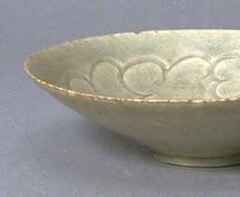
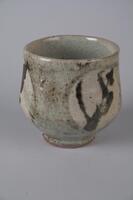
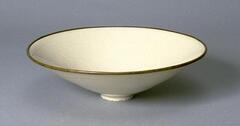
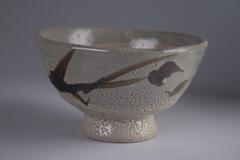
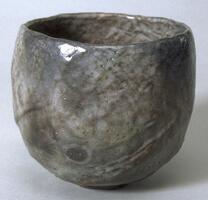

![Stoneware tea bowl with slightly flaring lip, white slip hakame design and colorless glaze.<br />
<br />
The inner and outer surfaces of this buncheong bowl have been brushed with white slip. Its inner base retains traces of seven spurs, while the uneven application of glaze has exposed the unglazed body. The glaze itself was fairly well fused. The bowl is intact without damage.<br />
[Korean Collection, University of Michigan Museum of Art (2014) p.156] Stoneware tea bowl with slightly flaring lip, white slip hakame design and colorless glaze.<br />
<br />
The inner and outer surfaces of this buncheong bowl have been brushed with white slip. Its inner base retains traces of seven spurs, while the uneven application of glaze has exposed the unglazed body. The glaze itself was fairly well fused. The bowl is intact without damage.<br />
[Korean Collection, University of Michigan Museum of Art (2014) p.156]](/media/W1siZiIsIjIwMjIvMDkvMjQvNm9xY20waHdlX2RlZmF1bHQuanBnIl0sWyJwIiwidGh1bWIiLCIyNDB4MjAwIl1d?sha=36b91ee5facf512c)
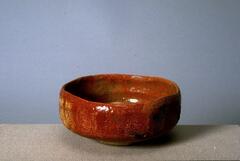
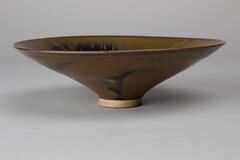
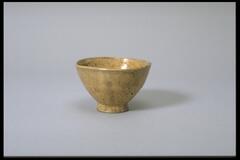
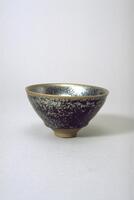

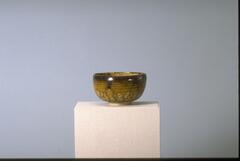
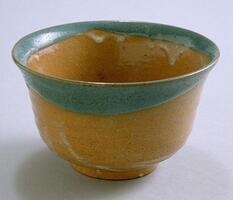




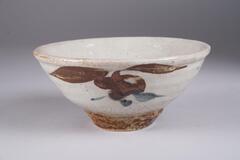
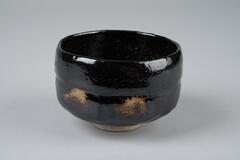
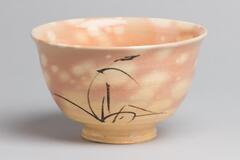

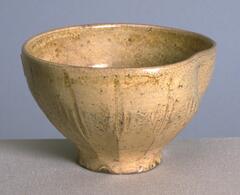
![<p>This bowl exemplifies early-tenth century celadon forms influenced by Chinese Yue ware. It has a halo-shaped foot (haemurigup), a characteristic of Yue ware. It is a high-quality celadon made from fine clay, coated by highly transparent glaze. Surface is plain while displaying crackles on its inner surface and parts of its outer surface. Many similar vessels were excavated from the Kilns no. 9 and no. 10 at Yongun-ri, Gangjin-gun, Jeollanam-do. Refractory spur marks created during firing remain in five places on the rim of the foot.<br />
[<i>Korean Collection, University of Michigan Museum of Art </i>(2014) p.88]</p>
Stoneware tea bowl with celadon glaze. <p>This bowl exemplifies early-tenth century celadon forms influenced by Chinese Yue ware. It has a halo-shaped foot (haemurigup), a characteristic of Yue ware. It is a high-quality celadon made from fine clay, coated by highly transparent glaze. Surface is plain while displaying crackles on its inner surface and parts of its outer surface. Many similar vessels were excavated from the Kilns no. 9 and no. 10 at Yongun-ri, Gangjin-gun, Jeollanam-do. Refractory spur marks created during firing remain in five places on the rim of the foot.<br />
[<i>Korean Collection, University of Michigan Museum of Art </i>(2014) p.88]</p>
Stoneware tea bowl with celadon glaze.](/media/W1siZiIsIjIwMjIvMDkvMjQvMXB2aXlzcnZpZF9kZWZhdWx0LmpwZyJdLFsicCIsInRodW1iIiwiMjQweDIwMCJdXQ?sha=7ddc9c1585910d07)

